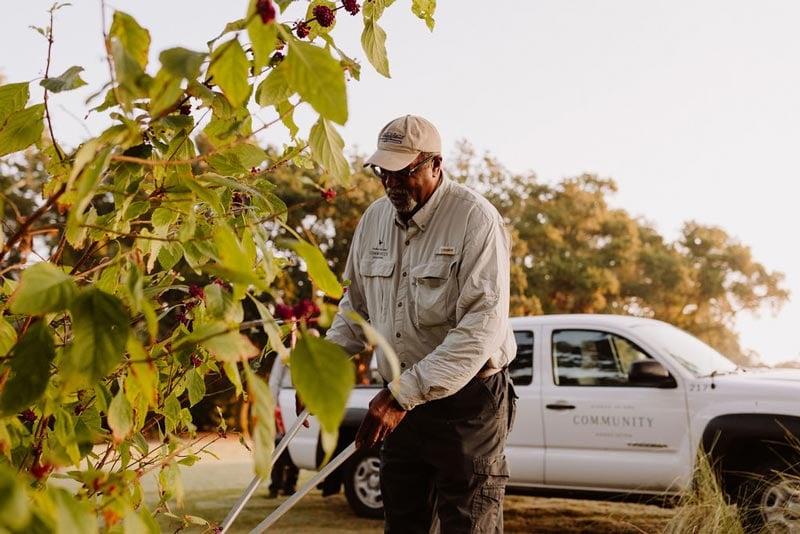Nov
11
2012
From The Blog
Dolphin Strand Feeding: Preserving a Rare Sight
Have you ever gone kayaking on the Kiawah River paddling along with the current, enjoying the cries of gulls and egrets in search for the Atlantic bottle-nosed dolphins? One day recently I was kayaking along an estuary wondering if I would even catch a glimpse of a dorsal fin. I was headed toward the mouth of the river and was pleasantly surprised by the phenomenon I would soon witness.
The Atlantic bottle-nosed dolphins found in Kiawah’s waters are a very intelligent and social sea mammal. Nowhere are these traits more evident than in the various ways our dolphins forage for their meals. One of these methods may occasionally be witnessed from the Kiawah beach. Dolphins frequently follow the shrimp trawlers we see daily off the coast of Kiawah, diving down to the sandy bottom to catch fish and invertebrate disturbed by the nets dragging behind the boats.
But the most spectacular foraging behavior of all is “strand” feeding, which has been reported in only a few places around the world and rarely seen with the frequency found in Kiawah’s waters. This is a very risky, predatory maneuver where the dolphins deliberately, temporarily, strand themselves on land. It usually involves several dolphins collaborating together using a biological sonar adaptation called echolocation to identify and encircle their prey in a tidal creek. A “scout” dolphin looks above the water line and checks for any obstacles on the shore or in the water that would
prevent their maneuver. Once signaled by this lead dolphin, the other dolphins gradually force their victims into an ever tighter school, or “bait ball,” toward a gently sloping exposed mud bank.
Then in an astonishing synchronized display of choreography, the dolphins simultaneously swim forward creating a bow wave from the weight of their bodies and their speed that throws the silvery mullets out of the water, stranding them on the mud bank. Moving forward the dolphins surge onto the bank in unison and, using their excellent above-water eyesight, scoop up the fish or catch them in mid-air. It all happens in almost a blink of an eye!
But there are risks involved in this dining frenzy. Occasionally a hunting dolphin will launch itself so hard that it is left completely out of the water, but by thrashing back and forth it can work its way backwards into the water. Dolphins strand many times during the few hours around low tide when the muddy banks are exposed. Young dolphin calves learn this risky behavior by watching their mothers, but rarely participate in stranding because of the intimidating size and weight of the adult dolphins. Due to the intense splashing and violent movements, bystanders often misinterpret what they are seeing as either a dolphin fighting or a mating ritual. Interestingly, the dolphins always strand on their right side. Over time, this causes the teeth on the right side of their jaws to wear down from taking in as much abrasive mud as fish! Some scientists and marine biologists theorize that because the dolphin’s breathing tube and trachea are on the left side of their bodies they are more protective of that side.
One way to find dolphins strand feeding is to follow the birds, which seem to know the dolphins’ favorite hunting spots, probably hoping for leftovers. Dolphins eat many small fish and marine animals, but basically they will eat whatever they can catch, which creates a problem. But keep your distance, and never feed a wild dolphin! Feeding dolphins is illegal and harmful to them and you. Fed dolphins learn to approach boats where propellers and fishing lines can seriously injure or kill the dolphins.
According to Colin Cuskley, executive director of the Johns Island Conservancy, it is illegal to approach dolphins in the wild. The Marine Mammal Protection Act, enacted in 1972, keeps dolphins from being hunted or harassed. Humans are a risk to dolphins in other ways. When humans enter the water, they are invading the dolphin’s natural environment. Strand feeding is a “learned” behavior, and when interrupted by humans either because the humans want to get a closer look, to take pictures, or just want to “swim with the dolphins” they are creating a life and death risk to themselves and the dolphins. Do not be lulled by their seemingly friendly disposition and “smiling” faces. Dolphins are powerful wild animals, with an average weight of 1,000 pounds, and may unintentionally harm people in the water. Colin says to help the dolphins, stay clear of them so as not to create an obstacle to their stranding. If dolphins see you as an obstruction, they will not use the beach you are standing on for strand-feeding. It is also illegal to disturb strand-feeding behavior. Colin cautions that dolphins carry diseases that can affect humans. If you are lucky enough to see strand feeding you should maintain a distance of 50 yards (recommended by NOAA) and remain still. Stay out of the water, do not approach them and use zoom lenses for filming or photography. New signs alerting the public of these precautions will soon be posted at Beachwalker Park and other locations around Kiawah.
Bottle-nosed dolphins in the wild can live to be 50 years old, on average, a remarkably long life span for an animal. We have a responsibility to respect them and give them the space they need to live their delicately balanced lives among humans on Kiawah. We are very fortunate to share our environment with such beautiful and captivating animals

